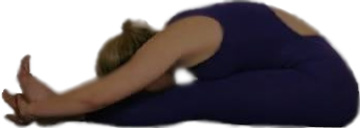
Posture:Ugra–asana–The Noble Pose
Translation:The Sanskrit word ugra means powerful, mighty, strong or noble. We usually keep this posture untranslated but it can be called the noble or powerful posture.
Alternate:Also known as the pascimottana-asana or the brahmacharya
name:asana. The word pascima can mean behind, later, last or final but it literally means "western" as in the direction. Pascimottana thus means back-stretching posture.
Pronunciation:oo-grah-sa-na
Difficulty:(4)
Instructions:
- Sit on the floor with the legs together and extended straight out in front. Keep the back straight, shoulders level and head straight. Place the hands, palms down, flat on top of the thighs then inhale deeply.
- Exhale and extend the arms straight out in front, parallel with the floor with fingers pointed straight ahead and palms facing down.
- Inhale slowly while raising the arms over the head, keeping them straight, and bending as far back as is comfortable. Tilt the head back and look up at the hands.
- Exhale slowly bending forward at the waist and grasp the feet with the hands. Bring the head as close to the knees as possible, placing it on the knees if you can, keeping the legs straight. (If you are unable to grasp the feet then grasp the ankles).
- Hold that position for the duration of the exhale breath.
- Inhale slowly and return to the seated position described in step #1.
Comments:
When the ugra-asana is properly performed, all the vertabrae of the spine and each muscle in the back is stretched. This type of stretching is highly beneficial. Try it regularly for a week and you will, without doubt, notice the benefits.
The compression or contraction of the stomach followed by the release increases blood flow to the abdominal region and tones the muscles.
Gas is release and sluggish digestion and/or constipation is improved.
The muscles in the calves and thighs get a good stretching, helping to relieve fatigue and soreness in the lower extremities.
Duration/Repetitions:
Repeat this posture two or three times holding each repetition for the duration of the exhaled breath and take at least three deep breaths in-between each repetition. As you become more adept at doing the ugra-asana you may begin breathing slowly through the nostrils while holding the posture to increase its duration.


